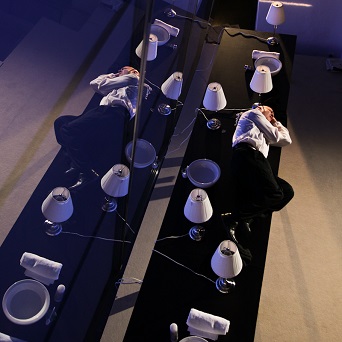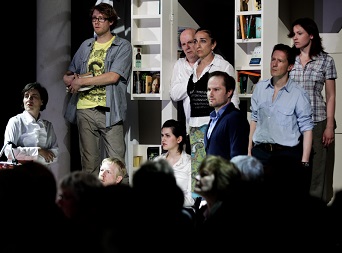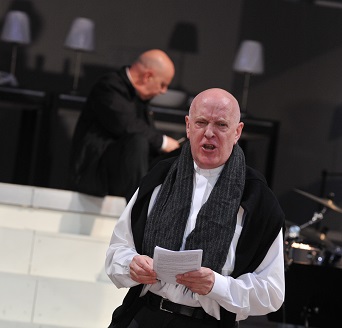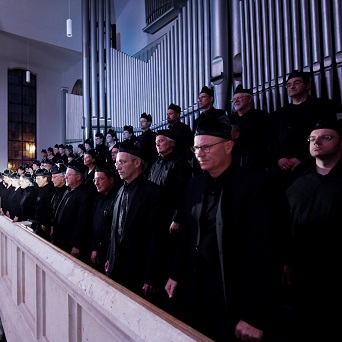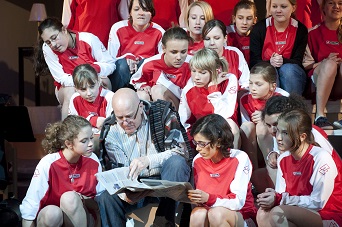2010 May 7th
Munich premiere:
LEONARD BERNSTEIN: MASS (1971)
A Theatre Piece For Singers, Players and Dancers
Chamber Version
Premiere (first performance): 7 May 2010
In the Evang.-Luth. St.-Markus-Kirche for the Ecumenical Church Day, Munich
Musical direction: KMD Holger Boenstedt
Director: Martina Veh
Stage and costumes: Martina Segna
Choreography: Stefanie Erb
Lighting: Benedikt Zehm
Video: Florian Rödl Multimedia
With Nigel Robson (tenor) as Celebrant
Singing, dancing and scenic performance in various roles:
Susanne Seimel (soprano), Michael Kilian (tenor), Stephanie Marin (mezzo-soprano), Cornelia Melian (mezzo-soprano), Sandra Nahabian (mezzo-soprano), Christopher Robson (countertenor), Stefan Gregor Schmitz (tenor), Sebastian Strehler (baritone), Dieter Streicher (performer), Oliver Weidinger (baritone).
The church choir of St. Mark's Church and sixteen orchestral musicians,
the Girls' Choir of the Munich Cathedral in collaboration with soloists of the Children's Choir of the Gärtnerplatz Theatre under the musical direction of Martin Danes,
boy soloist: Joshua Hofert (soprano)
About the piece
The "Mass", first performed in 1971, was commissioned for the opening of the "Kennedy Center of Performing Arts" (Washington), in memory of John F. Kennedy, to whom Bernstein had already dedicated his 3rd Symphony. At that time, Bernstein was not only accused of blasphemy, but also, at the height of the Vietnam War, called government agencies to the scene.
The "Mass" is a stylistic conglomerate, both musically and lyrically. The theatrical form of the is certainly not to be attributed to the musical genre, although Bernstein partly uses its means. Although it bears the title "Mass" and consists largely of set pieces from the pre-conciliar Latin Roman Catholic mass lithurgy, it is not a lithurgical composition.
„I have not written a Mass. I have written a theatre piece about a Mass. It cannot be performed in a church as a mass. Yet it is still a deeply religious work” (L. Bernstein).
But we are in a church. The church becomes the stage of everyday life.
We look at the "Mass" as a reflection of a daily routine. We want to look at the significance of sacred concepts that have migrated from the Christian mass into everyday life. Everyday life, and what makes us pause or put things in doubt.
In our version of Bernstein's "Mass" we have reduced the street chorus from 19 to 12 figures, which were developed together with the singers from Today. Through the medium of video projection onto a large mirror in the nave, at various points in the piece, on the one hand the urban space is brought into the church, referring to the respective daily routine of the figures, and on the other hand the reflection of the church itself.
Two figures observe the events from the outside because of their age: the child and the older man. The three symphonic meditation passages, which repeatedly interrupt the restlessness of the scenically posed questions, are dedicated to them. The figure of the celebrant accompanies us through the day as an open and far-sighted representative of the faith. He strives for a positive outcome to the search until he finally gives up in the face of people's doubts. He introduces the people to himself in a long monologue situation before he leaves the church.
The choir stands for a seemingly irrefutable order, for a kind of conscience.
What remains is silence; and whether all these doubts perhaps only mean the question of a higher being or another level of consciousness of our own self.

